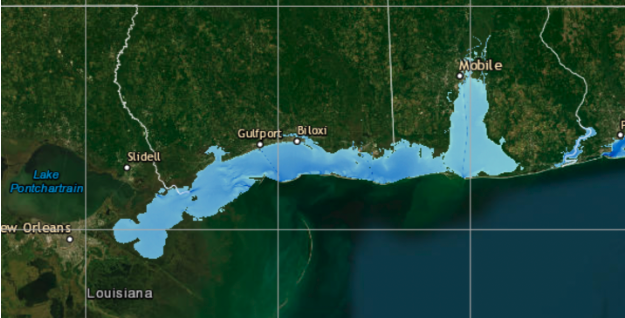Learn About the Mississippi Sound Estuary & Watershed

The term “Mississippi Sound estuary” is often used to refer to the broader estuarine system that includes the Mississippi Sound and its associated bays, sounds and marshes along the Gulf Coast of Mississippi and Alabama. The Mississippi Sound estuary is connected to the Gulf of Mexico through passes and inlets. It is a 90-mile-long arm of the Gulf of Mexico that is defined as extending from the state border in Hancock County, Mississippi, to the Dauphin Island Bridge in Alabama. However, Mother Nature does not follow state borders—the Mississippi Sound is the center of an estuary that begins in Lake Borgne in Louisiana and extends to Mobile Bay in Alabama.
An estuary is a partially enclosed coastal body of water where freshwater from rivers and streams mixes with saltwater from the ocean.
The estuarine nature of the Mississippi Sound makes it a vital and productive ecosystem that serves as a nursery and habitat for various marine species, including dolphins, fish, oysters, shrimp, other shellfish, and crustaceans. Our estuary is why our history, economy, and way of life are based on a healthy Sound to produce abundant and sustainable marine life for our seafood industry, recreational fishing, and a tourism and resort destination of national renown.
The natural mixing of freshwater and saltwater in estuaries creates a unique environment that supports diverse and dynamic ecosystems. Estuaries like the Mississippi Sound are nurseries for marine life vital for the health of coastal regions, providing important ecological services such as water filtration, nutrient cycling, and support for commercial and recreational fisheries. They also play a crucial role in protecting coastal areas from storm surges and erosion.
Related site: Mississippi Sound Estuary Program